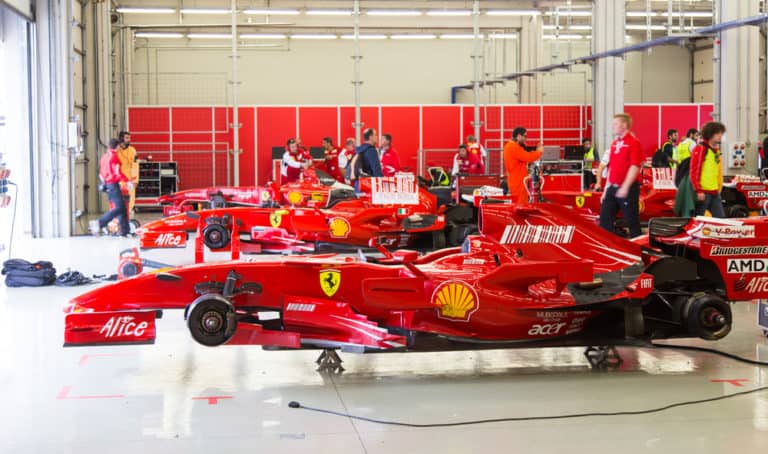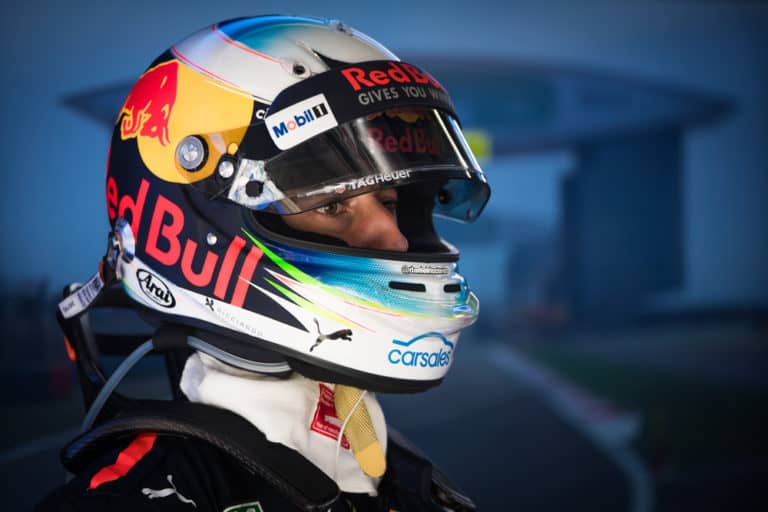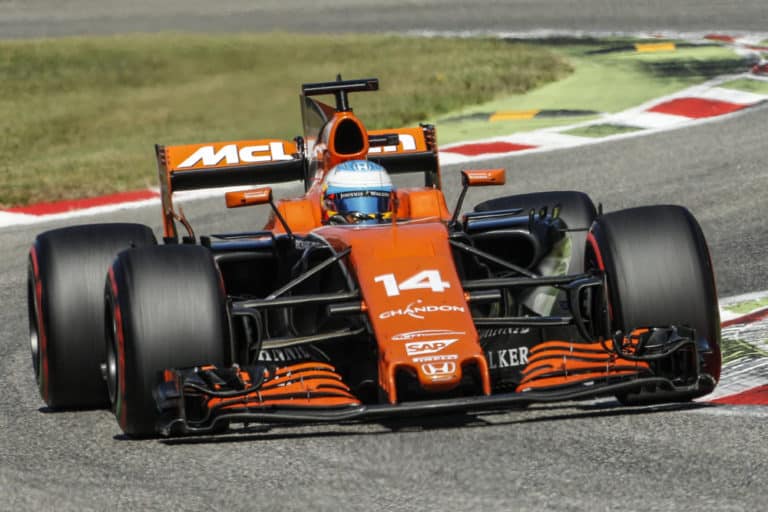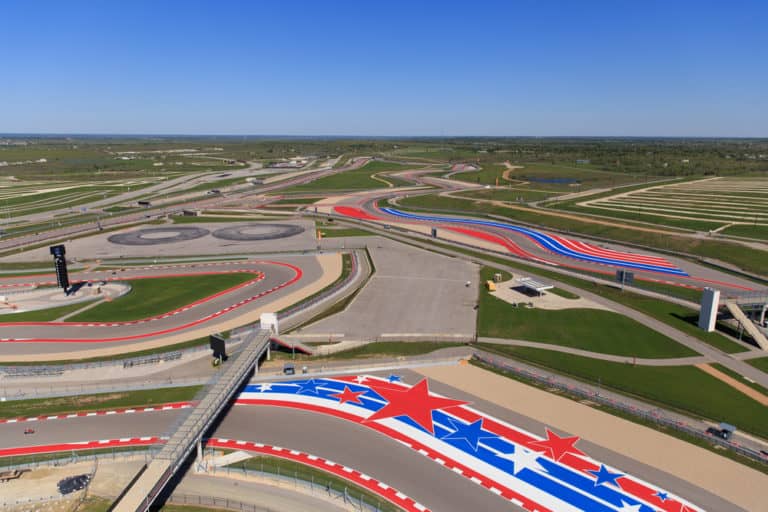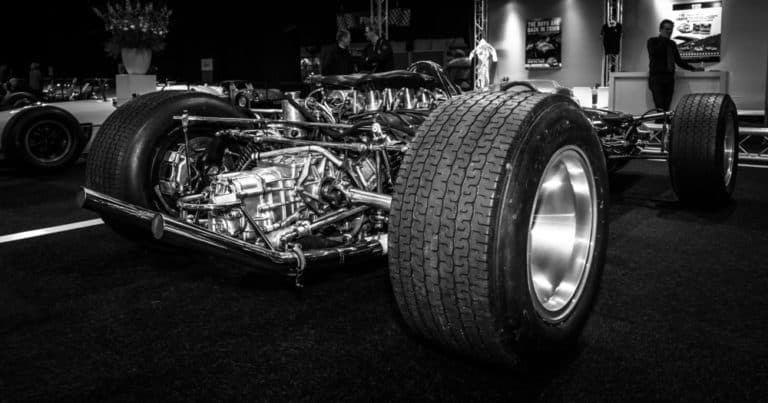The F1 tire plays a substantial role in the car’s performance and has to withstand the different track surfaces and weather conditions from around the world! The pit crews can be seen changing the car’s tires all weekend long, but how many tires can F1 use?
A Formula 1 team is issued 13 sets of dry weather tires per race car for a race weekend. The tires are used for free practice and qualifying, but only 3 sets are kept for the main race. Teams are also issued with 4 sets of intermediate and 3 sets of wet weather tires per car for rain conditions.
How many tires can a formula team use? What are the different tires types, and when can they be used? These are a few of the burning questions answered in this article.
How Many Tires Does A F1 Team Use?
Each team will receive 13 sets of dry weather tires for a full race weekend; the team will use these sets for the three practice sessions (FP1, FP2, FP3) and the qualifying session. Only 3 sets of the dry weather tires are kept for the main race.
The Formula 1 teams are also issued with 4 sets of intermediate tires and 3 sets of wet weather tires. These sets may only be used when the Race Director declares the track wet. During the main race, the teams must do a mandatory pit stop as they must use two different tire compounds for the race.
The Different Tire Compounds Used In F1
Some tire compounds are softer than others, harder compounds last longer, and some are used in wet conditions. Tire manufacturer Pirelli is the sole provider of Formula 1 tires, and they have a variety of tire compounds for all conditions.
The Dry Weather Tire Compounds
There are 5 different dry weather tire compounds. They are classified as:
- Compound 1 (C1) is an ultra-soft tire that delivers maximum grip but wears out very quickly.
- Compound 2 (C2) is a soft tire with a good grip and lasts longer than the C1 compound.
- Compound 3 (C3) is a medium-hard tire balancing grip with distance.
- Compound 4 (C4) is a hard compound tire with less grip than the medium (C3) but lasts slightly longer.
- Compound 5 (C5) is an ultra-hard compound with a very low wear characteristic and offers the lowest level of grip of the 5 compounds.
Pirelli will select 3 of the above compounds for a race weekend and categorize them with different color bands on the walls of the tires. All the teams will be issued the same amount for each compound.
| Tire Category | Tire wall color | Sets issued per car |
| Soft | Red | 8 sets |
| Medium | Yellow | 3 sets |
| Hard | White | 2 sets |
The Wet Weather Tire Compounds
There are two types of wet weather tires used in Formula 1, the intermediate and the wet tire.
- Intermediate is a medium compound tire with tread on it and can operate in cooler track conditions.
- A wet tire compound is a treaded tire specifically designed for very wet track conditions.
All the teams are issued with intermediate and wet tires for each race but are only allowed to use them if the Race Director has declared the track wet. In this scenario, a set of dry-weather tires will be swapped out for each set of intermediates or wets used. If the free practice sessions are declared wet, the manufacturer will swap dry tires for wets on a set-by-set basis.
| Tire Category | Tire wall color | Sets issued per car |
| Intermediate | Green | 4 |
| Wet | Blue | 3 |
How Are The Tire Compounds Selected For Each Race
The sole tire manufacturer for Formula1 is Pirelli, and they will select 3 of the 5 compounds for the race weekend. The weather is a major contributor to the selection process and includes the track surface texture and the circuit layout. A fast corner and high-temperature track will suit the harder compound, and a short twisty street circuit will favor the softer compound.
What Are The Different Tire Strategies?
The red, yellow, and white tires are used in dry weather conditions, and the green and blue tires are used in wet conditions. Each tire has its strengths, and the teams will use it to gain any advantage they can.
The Red Soft Tire
The Formula 1 drivers prefer this soft tire on circuits such as Monaco as it offers the most grip but wears out extremely fast. The quick-wear rate will result in the driver doing more pit stops. So, for this reason, it is used in conjunction with a harder tire so the driver can complete the race without pitting again.
The Yellow Medium Tire
The yellow medium tire is an all-around tire and is most often used in qualifying 2 (Q2), as this will set the driver up for a good race strategy. The medium tire fits in-between the soft and hard tire and allows the teams to have more choice or versatility in their race strategy. When the drivers look after this medium compound tire, they can do longer race stints than usual, often longer than the manufacturer indicated.
The White Hard Tire
The hard compound tire is more durable than the other sets, but what is made up in duration is lost in speed and grip. Often teams will do a pit stop if there is an early Safety Car, and will then switch to this compound, which should result in the car being able to finish the race without stopping again.
The Green Intermediate Tire
The treaded intermediate tire has a green band on the tire wall and is an all-around tire that can be used on a wet or dry track. The intermediate tire is capable of dispersing 30 liters of water per second in wet conditions, and this is used on a track that is busy drying out after a rainstorm. The tire can be used when the track is dry but wears quickly and does not supply the same amount of grip as a slick tire would.
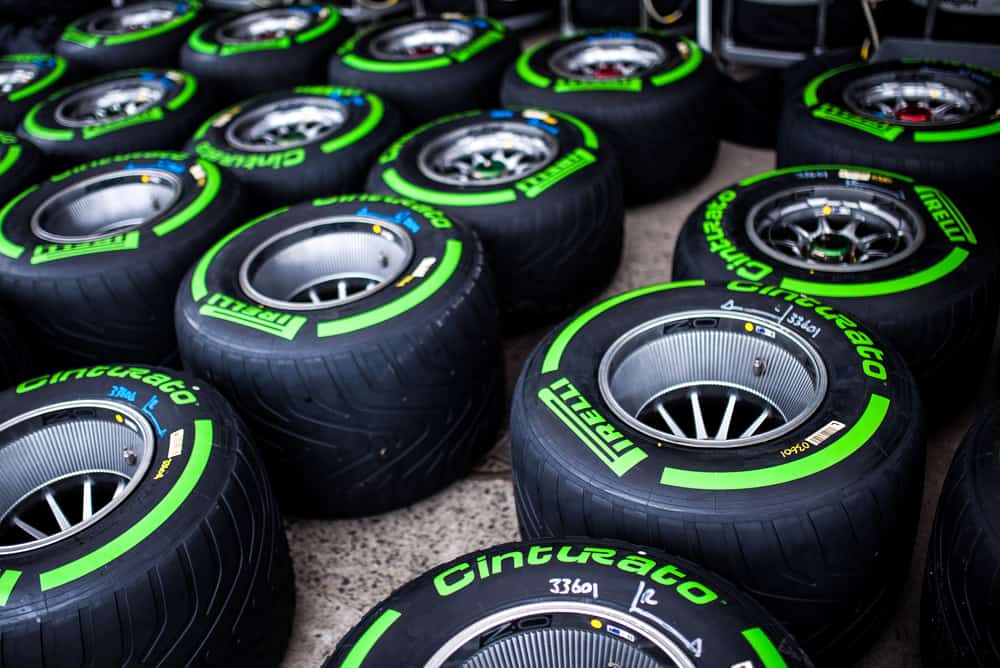
The Blue Wet Tire
The Wet tire is used in heavy rain conditions and is a deep treaded tire that can dissipate 85 liters of water per second at a speed of 200mph. This tire offers superior grip in the rain but is not suited to dry track conditions and will over-heat within a few laps.
Conclusion
The race teams in Formula 1 are issued with 13 sets of dry-weather tires for the race weekend. Five different dry-weather tire compounds range from C1 to C5, and each compound has its unique ability. The tire manufacturer, Pirelli, will select 3 of the compounds that must be used during the race weekend.
A further 4 sets of intermediate and 3 sets of wet weather tires are issued for a race weekend in the event of wet or heavy rain conditions. Although many tires are used in F1 racing, these tires all have a unique strategy, and the race teams apply this to gain an advantage over their race competitors.

